|
Schools participating this year included:
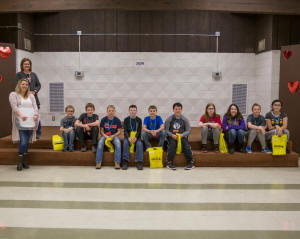
Zion Lutheran

Mount Pulaski
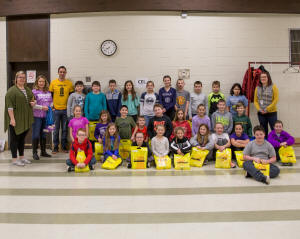
Chester East Lincoln
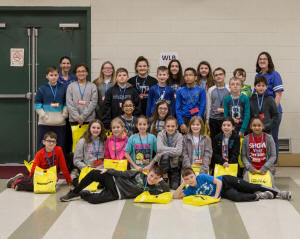
West Lincoln Broadwell
Hartsburg Emden, New Holland Middletown, Northwest, Washington
Monroe and Central also attended.

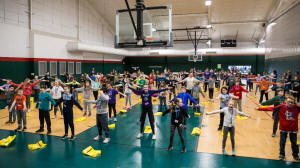
The morning’s activities began with “Get Up and Move,” which allowed
students time to get moving and burn off some energy.
Students then went to interactive breakout sessions where they heard
from four different speakers about issues they may be facing at
their age and into the teen years.
Students learn about substance abuse
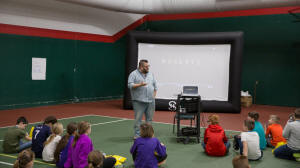
Chris Schaffner spoke to students about substance abuse. He began by
asking how many knew someone their age who uses drugs or alcohol and
several raised their hands. Schaffner said they would have some hard
decisions to make because research shows that in junior high and
high school, many experiment with drugs or alcohol. He told kids,
“You need to decide if you are going to be one of those people,” and
said those people are not bad, they are just making bad choices.
Schaffner showed students the animated video “Nugget” with a bird
repeatedly eating a substance until eventually becoming addicted.
He asked the students what they saw, and they said the bird was
using drugs and was soon addicted, just running right to the
substance without thinking about it. One student said maybe the bird
decided to stop, but by then it was too late because of all the
damage done. Another thought it eventually died from the effects.
Schaffner said what started out as fun for the bird did not work as
much, and soon was not as much fun. The bird could not fly or jump
as high and life got darker as the substance affected it both
physically and mentally.
Schaffner told students making healthy choices is important because
if you try drugs, it rewires your brain and makes it hard to live
without drugs.
He then had the students practice saying “no” when he asked them to
“try” smoking, drugs, and alcohol. He asked the kids what they would
say and do if it was their best friend asking them and some said
they would just say no, try to help the friend, and tell the friend
drugs are disgusting.

This session ended with students writing messages on poster board
about not using drugs.
Students learn the importance of making good choices

DARE Officer Christy Fruge spoke to the children about Good Choices.
Fruge asked students about good choices and goals and wrote out a
list that included getting a scholarship, going to college, staying
healthy, and getting a good paying job.
The other list was of bad choices and students said they include
lying, being rude, damaging property, breaking the law, doing drugs
and smoking.
Fruge said making poor choices may keep you from being able to
attain some of your goals. The good choices relate to future goals
and bad choices can affect these goals. She told students every
decision can affect your future, so it important to make good
choices. Students learn about managing
emotions

Cynthia Fedor talked to students about Mental Health and dealing
with different emotions.
[to top of second column] |

Fedor asked for volunteers to hold up signs that
listed different emotions and feelings such as stressed, scared,
suicidal, angry, sad, happy, joyful and silly.
She asked the kids which emotions they should think
about before acting, and she had big signs that said ‘Go,’ ‘Slow,’
and ‘Whoa.’ The student would stand by the Go sign if it was an
emotion where you could go and do something, the Slow sign if the
emotion required thinking before acting, and the Whoa sign if the
emotion required stopping before making choices.

A list showing problem solving through your emotions had a stoplight
with red representing Whoa, yellow representing Slow, and green
representing Go.
-
With Whoa, you define the problem, identify the
choices, and identify the plusses and minuses of each choice.
-
With Slow, you determine the best choice based on
the plusses and minuses after talking with an adult.
-
With Go, you act on the decision and evaluate the
results.
Students decided emotions such as anger or stress are
Whoa emotions, while being silly is a Slow emotion, and being happy
is a Go emotion.
Fedor told students they need to learn to listen to their emotions
because they can be extreme and hard to handle, and emotions such as
anger may require distance. She taught them how to monitor and
manage emotions.
Students learn about cyberbullying
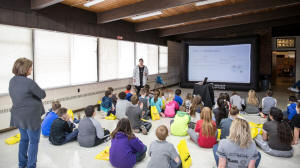
Jennifer Keith led a session on Cyber Bullying. Keith said the cyber
part is on computer, desktops, tablets, phones, email, and emojis
and is sometimes done anonymously. The bullying is seeking to harm
or hurt someone usually through a repeated action.
Cyberbullies share negative or mean content or personal, private
information to cause embarrassment and it is persistent and
permanent.
Adults do not see the information unless it is reported, and Keith
told students they need to report it.
Keith showed students statistics that reported:
-
34 percent of people from ages 12-25 have faced
nasty or abusive comments online.
-
68 percent sent vulgar texts.
-
41 percent developed social anxiety.
Keith asked students to go stand by one of four
posters:
Blue if they had been made fun of for their looks.
Green if they had been made fun of for something they wore.
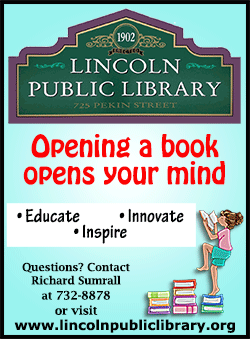
Yellow if they had been made fun of for something they said.
Orange if they had been made fun of for something they did.
They could stay in the middle if they had never been made fun of.
But everyone stood by one of the posters.
Keith then asked the kids how it felt, and most said bad or sad. She
reminded them anything they post is not private and reminded them
that others can use what is posted against them.
The kids were asked to stand by the various posters if they had
said, done, or wore something to make someone mad on purpose or if
they had told someone’s secret to others. She said to the students,
maybe you felt power when you did something like that, but you felt
bad when you got caught.
Keith explained how cyberbullying affects the victims, bullies and
witnesses:
-
Victims may be embarrassed to report it to adults
and become depressed, withdrawn, and lose interest in social
situations.
-
Bullies hide in cyberspace because they do not
want to get caught, have “keyboard courage” when they cannot see
a victim’s reaction, and like to create pain or be liked by a
“mob.”
-
Witnesses often scroll through comments but do
not stand up for the victim, worry that standing up for victims
will make them a target, and may lose interest in social
situations to avoid watching it happen.
Cyberbullying can happen because the victim does not
seem like a real person online and the bullies may not consider
their actions, Keith said. She told the students to think and ask
whether something is true, helpful, inspiring, necessary or kind
before posting, and if not, do not post.
Keith showed them a video of her dancing and said if she posted it
on youtube, she would need to be prepared for how people may
respond. She told the students, what you think is awesome,
hilarious, and great, others may not like and may make mean comments
about it. You need to realize people may not be nice and you will
need to learn how to handle that.

As the morning’s activities drew to a close, all the groups came
back together for a wrap up discussion and evaluation time.
The fifth graders were also able to participate in a photo contest
in which the students submitted photos depicting themselves
participating in their favorite activity. First, second, and third
place winners were announced in the closing session and photos were
displayed at Saturday's Community Wellness Expo.
At the Wellness Expo, these students learned many tips for not
abusing substances, making good choices, handling emotions, and
dealing with cyberbullying.
[Photos by Mitch Douglas]
|